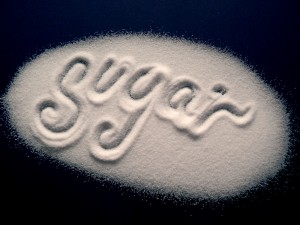Effect of Added Sugars in Growing Up Milk Powders on Children
By Dr. Muhammad Yazid Jalaludin
Paediatric Endocrinologist
Added sugars in growing-up milk products (GUMP) in Malaysia has been the talk of the town among mothers whose children consume growing-up milk formula. “Is sugar harmful to a child’s health? What exactly are added sugars in GUMP? How to choose the right milk without the added sugars? What are the consequences?” are among frequently asked questions.
Is sugar harmful to a child’s health?
Sugar is not necessarily bad as it provides children the energy they need to grow. However, it becomes a problem when the amount is excessive and much higher than the daily recommended intake as it increases the chances of various health problems.
Human cells use sugar (glucose) as a major source of energy. Our body breaks down complex carbohydrates and changes it into glucose. Carbohydrate is an important part of our diet, and more so for growing children. According to World Health Organisation (WHO) recommendations, 55 to 75 per cent of energy intake should come from carbohydrate, 15 to 30 per cent from fat and 10 to 15 per cent from protein.
Take note that these carbohydrates should come mostly from natural food sources containing complex carbohydrates like grains, fruits, vegetables and legumes. Carbohydrates for children should not come from free sugars such as that added into food and sugars naturally present in syrup and fruit juices. Free sugars should constitute less than 10 per cent of total calories, i.e., around 38g per day (about seven teaspoons) for preschool children.
What exactly are added sugars in GUMP?
In Malaysia, sugars are listed as sucrose, fructose, sorbitol, mannitol, corn syrup, honey, malt, malt extract, maltose, extracts of rice, molasses, golden syrup and inverted sugar on food labels. (http://www.myhealth.gov.my/v2/index.php/en/nutrition/general/fakta–mengenai–gula
The “carbohydrate” printed on the Nutrient Information Panels (food labels) of food products refers to available carbohydrate, which includes monosaccharides, disaccharides, oligosaccharides, polysaccharides and a mixture, such as glucose syrup or corn syrup. Regardless of the source of carbohydrate, whether it is derived from intact starch or corn syrup, enzyme amylase that is present in our gut ensures all starch and starch fragments are quickly digested into glucose.
Milk, one of the best sources of carbohydrates for children is good for health and easily consumed. It is rich in calcium (healthy bone) and many other essential nutrients, e.g., protein (tissue growth and repair), vitamins A (healthy eyes) and D (calcium and phosphorus absorption), and minerals like zinc (immune function) and magnesium (calcium absorption). In a typical serving of milk (200ml), there is about 11g to 12g of carbohydrates. This is lactose, or “natural milk sugar”, a naturally occurring healthy sugar in milk.
However, most GUMPs in Malaysia are made up of two types of carbohydrates: lactose, and sugars that are added to the milk powder. As such, under the Malaysian Food Labeling Regulations, the term “carbohydrate” on milk powder labels means lactose and added sugars.
How to choose the right milk, without the added sugars?
Lack of awareness on the various terminologies used to describe carbohydrates is often the cause of uninformed decisions on GUMPs. One of the commonest misconceptions is the term “sugars”, commonly perceived only as table sugar (sucrose). Sugars include glucose, fructose and lactose, which may be added on its own and therefore identified in the ingredient list, or hidden within a mixture such as corn syrup in which case they would not be specifically identified in the ingredient list.
It is important that mothers are guided by the “carbohydrate per serve” value on food labels. As a rule of thumb, a standard serving of lactose in milk is 39g per 100g of powder, or about 10g – 12g per serving size. Hence, any level above these values signifies the presence of added sugars.
All available carbohydrates in GUMP including naturally present milk sugars (lactose) and added sugars are declared as “carbohydrate” on food labels, and thus serve as a guide to how much the body will digest as glucose. In addition to increased glucose intake, added sugars in GUMP also often result in reduced protein levels, thus diluting the nutritional value of the formula.
What are the consequences?
Worldwide, obesity is on the rise and Malaysia is not spared. Between the years of 1990 and 2000, the rate of overweight and obese Malaysian children was estimated between six and 10 per cent. However, this rate has since jumped to 26.5 per cent in 2008. It is believed that the reason for the dramatic rise in obesity in recent years is closely related to environmental factors such as excessive calorie intake and sedentary lifestyle.
Several studies show consumption of sugar-sweetened beverages (SSB) accounted for almost 10 per cent of total calories consumed and, more importantly, positive linkage to obesity. Obese children have also been shown to have a higher tendency to grow into obese adults, i.e., obese six-year-olds have an over 50 per cent chance of becoming obese adults. This increases exponentially as they get older to a 70 per cent chance of becoming obese adults if they are obese as a teenager! Another study shows that overweight children aged from six to 12 years have a 25 per cent chance of getting impaired blood sugar, and 60 per cent of them have at least one risk factor for heart disease. This is worrisome because it means that these children have a dangerous head start to suffering heart attacks and strokes.
As trends suggest that overweight and obese children continue to rise, parents must do something by following recommended energy intake guidelines for complex carbohydrates and keeping free sugar intake to less than 10 per cent of total energy intake. Parents must do their homework and take time to study food labels in order to know how much sugar is in the food and where to find hidden sugars.








